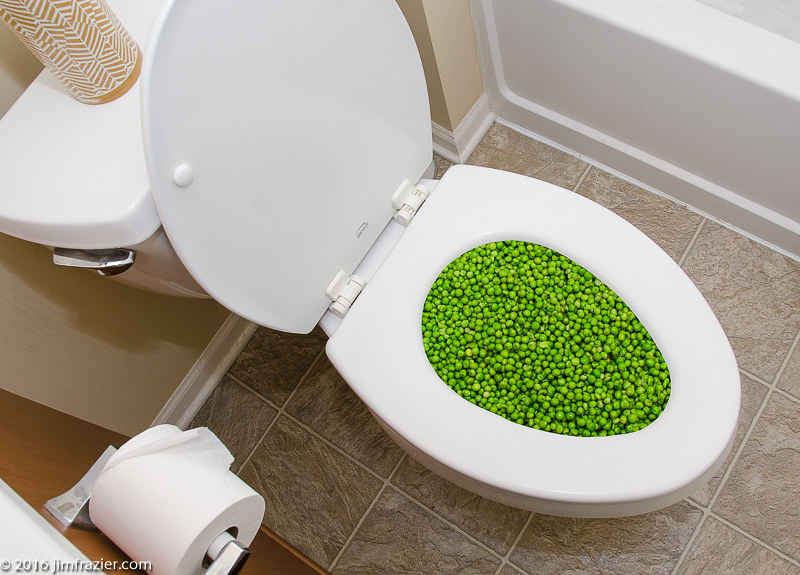Can One to Flush Food in the Toilet?
Can One to Flush Food in the Toilet?
Blog Article
We have stumbled on this article on Think Twice Before Flushing Food Down Your Toilet directly below on the internet and accepted it made sense to write about it with you in this article.

Introduction
Lots of people are frequently confronted with the dilemma of what to do with food waste, especially when it pertains to leftovers or scraps. One typical question that emerges is whether it's okay to purge food down the bathroom. In this short article, we'll delve into the reasons why people might think about flushing food, the consequences of doing so, and alternative methods for proper disposal.
Reasons that individuals could consider flushing food
Lack of recognition
Some individuals might not be aware of the possible harm caused by purging food down the toilet. They may erroneously think that it's a harmless method.
Benefit
Purging food down the commode might seem like a quick and very easy solution to taking care of unwanted scraps, specifically when there's no neighboring trash bin readily available.
Idleness
Sometimes, individuals might just pick to flush food out of large negligence, without considering the effects of their activities.
Repercussions of flushing food down the toilet
Environmental effect
Food waste that winds up in rivers can contribute to air pollution and harm marine ecological communities. Furthermore, the water made use of to purge food can stress water resources.
Plumbing problems
Purging food can bring about clogged up pipes and drains, causing costly plumbing repairs and aggravations.
Kinds of food that need to not be purged
Coarse foods
Foods with coarse appearances such as celery or corn husks can obtain entangled in pipelines and trigger clogs.
Starchy foods
Starchy foods like pasta and rice can absorb water and swell, causing blockages in pipes.
Oils and fats
Greasy foods like bacon or food preparation oils should never be flushed down the bathroom as they can strengthen and trigger obstructions.
Appropriate disposal approaches for food waste
Making use of a waste disposal unit
For homes equipped with waste disposal unit, food scraps can be ground up and flushed with the plumbing system. Nonetheless, not all foods appropriate for disposal in this fashion.
Recycling
Certain food product packaging materials can be recycled, minimizing waste and decreasing environmental influence.
Composting
Composting is a green method to throw away food waste. Organic products can be composted and made use of to enrich dirt for gardening.
The significance of correct waste administration
Decreasing environmental injury
Proper waste administration practices, such as composting and recycling, assistance reduce contamination and preserve natural deposits for future generations.
Safeguarding plumbing systems
By staying clear of the practice of flushing food down the toilet, house owners can protect against expensive plumbing repair work and preserve the integrity of their pipes systems.
Final thought
In conclusion, while it may be alluring to flush food down the bathroom for convenience, it is very important to comprehend the potential repercussions of this activity. By embracing appropriate waste monitoring techniques and throwing away food waste responsibly, people can contribute to healthier pipes systems and a cleaner atmosphere for all.
FLUSH FOOD DOWN THE TOILET?
FLUSHING FOOD CAN CAUSE BLOCKED DRAINS IN YOUR HOME
All of the plumbing fixtures in your home are connected to the same sewer pipe outside of your home. This outdoor sewer pipe is responsible for transporting all the wastewater from your home to the Council sewer mains. Even small pieces of food that go down the kitchen sink can cause problems for your sewer. It should therefore be obvious that flushing larger bits of food, such as meat, risks a clog in either the toilet itself or the sewer pipes. Flushing greasy food is even more problematic because oil coagulates when it cools, coating the interior lining of your pipes.
THE TOILET IS NOT A BIN
Food isn’t the only thing that people shouldn’t be flushing down the toilet. People use the toilet to dispose of all kinds of things such as tampons, makeup wipes, dental floss, kitty litter and even underwear. Water goes to great lengths to educate residents about the high costs and stress placed on wastewater treatment systems simply from people flushing the wrong stuff down the toilet. It costs taxpayers millions of dollars each year, and homeowners thousands in blocked drain repairs.
FLUSHING FOOD IS A WASTE OF WATER
Flushing food is a waste of our most precious resource - water. In June this year Level 1 water restrictions were introduced to protect water supply from drought conditions. Much of New South Wales continues to be affected by prolonged drought with recent figures revealing up to 97 per cent of the state remains in drought. Depending on whether you have a single or dual flush toilet, every single flush uses between five and 11 litres of water. In the current climate this is a huge amount of water to be wasting on flushing food that should be placed in the bin (or better yet, the compost).
https://www.jabplumbingsolutions.com.au/blog/can-you-flush-food-down-the-toilet

Do you like reading up on Flushing Food Down the Toilet?? Post feedback directly below. We'd be happy to hear your thinking about this blog post. In hopes that you come back again soon. Are you aware of another person who is interested in the niche? Feel free to promote it. Thanks a lot for being here. Don't forget to check up our site back soon.
Book My Estimate Report this page